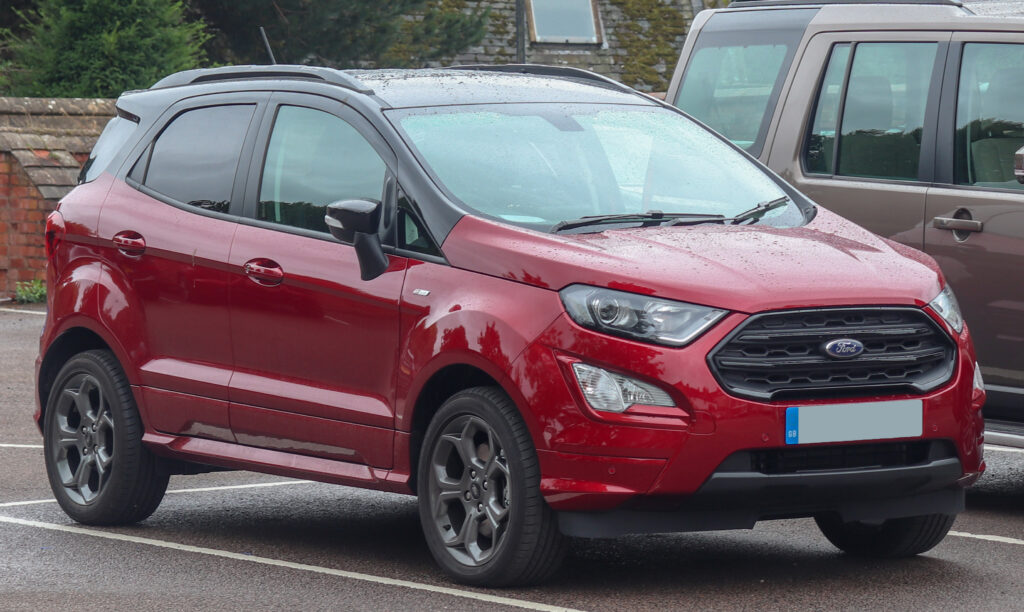
In the complex world of automotive ownership, the excitement of driving a new vehicle off the lot can quickly turn into a frustrating saga of repairs, underperformance, and buyer’s remorse. Choosing a car represents a significant investment, often involving tens of thousands of dollars and multi-year financial commitments. It’s a decision where aesthetic appeal and initial specifications can sometimes mask deeper, more costly problems that only surface after extensive ownership.
Indeed, some cars, despite promising much, consistently fail to deliver on fundamental expectations like reliability, comfort, and performance. The financial and emotional toll of frequent breakdowns, unexpected maintenance costs, or simply an unsatisfying driving experience can lead owners to deeply regret their choice. This regret isn’t just a fleeting thought; it becomes a persistent reminder of a poor investment.
To help prospective buyers navigate this challenging landscape, and to provide current owners with a sense of shared experience, we’ve delved into specific examples. By learning from the widespread dissatisfaction reported by countless vehicle owners, one can make more informed decisions. Here, we present the first four sedans that have earned a notorious reputation for leaving their drivers wishing they had never signed on the dotted line.
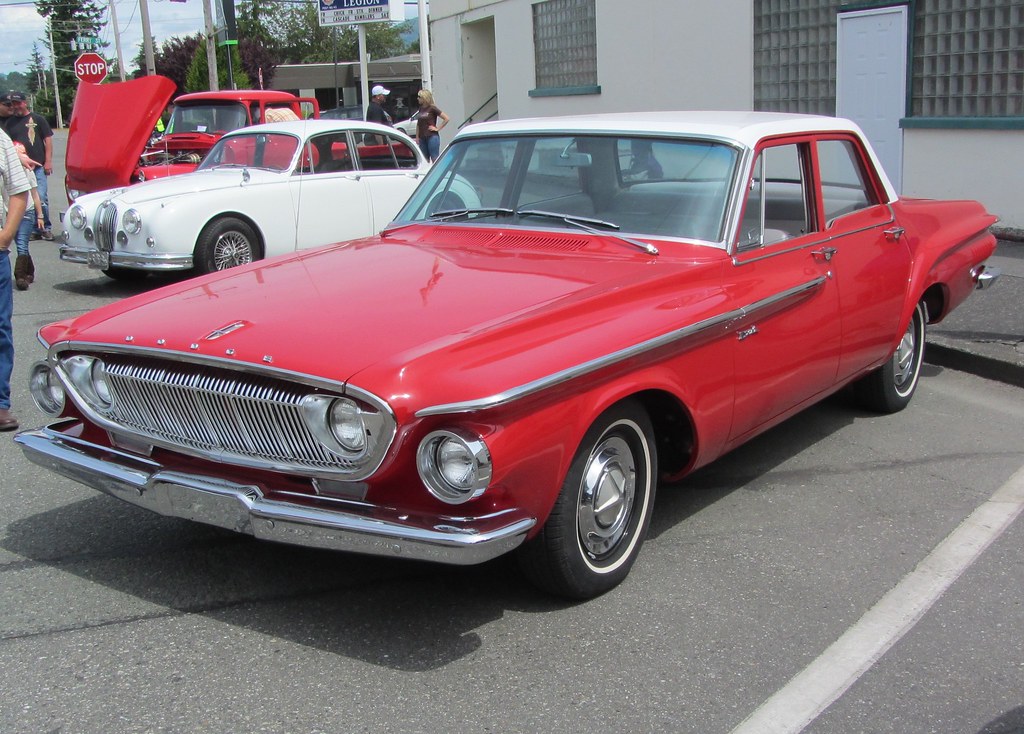
1. **Dodge Dart**The Dodge Dart, a compact sedan, unfortunately garnered a reputation for having what many owners describe as ‘full-size car problems.’ Marketed as an affordable and stylish entry into the compact segment, it quickly became a source of significant frustration for a substantial portion of its owners. The allure of its contemporary design and competitive pricing often faded when faced with persistent mechanical issues across various critical components.
Owners frequently reported a litany of issues spanning the vehicle’s entire operational spectrum. From the moment the engine ignited, problems with the transmission, engine, suspension, and brakes emerged as common complaints. These weren’t isolated incidents but rather widespread reliability concerns that chipped away at the ownership experience, turning daily commutes into potential sources of anxiety.
Perhaps one of the most damning statistics comes from Consumer Reports, which highlighted that ‘around six in 10 buyers say they are not satisfied with the vehicle.’ This high percentage of dissatisfaction underscores a fundamental mismatch between owner expectations and the vehicle’s actual performance and reliability. For many, the Dart symbolized a regrettable compromise, a vehicle that looked promising but ultimately failed to deliver the dependable service expected from a modern car.
This widespread sentiment of regret is a powerful indicator for anyone considering a used Dart. The sheer breadth of its reported faults, from the crucial drivetrain components to fundamental safety systems like brakes, suggests a vehicle whose design or manufacturing had inherent flaws. It stands as a prime example of how initial impressions can be misleading, and how the long-term reality of ownership can be a stark contrast to showroom appeal.
In essence, the Dodge Dart serves as a cautionary tale in the compact sedan market. Its history is replete with complaints about core mechanical systems, leading to a significant majority of owners wishing they could rewind time and choose a different car altogether. The financial burden of repairs coupled with the sheer inconvenience meant that the Dart often became more of a liability than a practical means of transportation.
Car Model Information: 2015 Dodge Dart SXT
Name: Dodge Dart
Caption: 1966 Dodge Dart GT 2-door hardtop
Manufacturer: Dodge
Production: 1959–1976 (US market)
ModelYears: 1960–1976 (US market)
Class: Full-size
Layout: FR layout
Predecessor: Dodge Coronet#Fourth generation (1957–1959)
Related: Plymouth Valiant,Chrysler Valiant,Dodge Phoenix
Successor: Dodge Aspen,Dodge Diplomat,Talbot Tagora
Categories: 1970s cars, All articles with unsourced statements, Articles with short description, Articles with unsourced statements from December 2023, Articles with unsourced statements from May 2025
Summary: The Dodge Dart is a line of passenger cars produced by Dodge from the 1959 to 1976 model years in North America, with production extended to later years in various other markets.
The production Dodge Dart was introduced as a lower-priced full-size model in 1960 and 1961, but became a mid-size car for one model year for 1962, and was then reduced to a compact for two generations, from 1963 to 1976.
Chrysler had first used ‘Dart’ name plates on two Italian styled show cars, in 1956 and 1957, before it became a Dodge model name. The Dart nameplate was resurrected for a Fiat-derived compact car that was introduced in 2012.
Get more information about: Dodge Dart
Buying a high-performing used car >>>
Brand: Dodge Model: Dart
Price: $9,995 Mileage: 143,082 mi.
Read more about: 15 Vehicles Millennials Are Steering Clear Of: Unpacking the Generational Divide in Automotive Appreciation
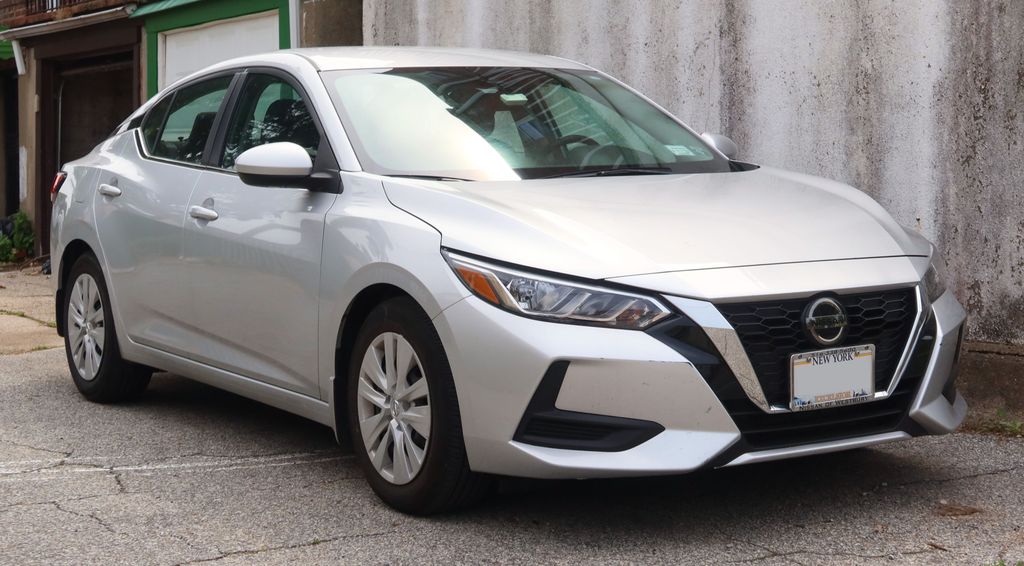
2. **Nissan Sentra**The Nissan Sentra, while a staple in the compact car market for decades, has some specific model years that stand out for all the wrong reasons. The period from 2013 to 2019, in particular, became infamous among owners for a range of critical issues that severely impacted the vehicle’s reliability and driving experience. These model years are widely considered to be ‘horrific’ by those who endured them, leading to deep regrets about their purchase.
At the heart of many Sentra owners’ frustrations during this period was Nissan’s continuously variable transmission (CVT). This particular transmission, intended to offer smoother acceleration and better fuel economy, proved to be ‘a thorn in the side of many Sentra owners.’ The problems associated with it were pervasive, including ‘overheating, jerky acceleration, and shuddering.’ These issues translated into an unpredictable and often uncomfortable driving experience, far from the seamless operation promised by CVT technology.
Beyond the transmission, the Sentra models from this era also suffered from other significant mechanical problems. ‘Among the laundry list of issues is engine stalling,’ a severe safety concern that could leave drivers stranded or in dangerous situations. Such a critical flaw further eroded confidence in the vehicle’s basic functionality, highlighting deep-seated reliability problems that went beyond mere inconvenience.
Adding to the concerns, these Sentra model years were also subject to a substantial number of recalls. The context specifically notes, ‘And there have been many recalls related to the vehicle’s airbags, seatbelts, brakes, and more.’ This extensive list of safety-related recalls paints a concerning picture of a vehicle that struggled with fundamental quality control, further solidifying its place on the list of cars owners wish they hadn’t bought. The cumulative effect of these problems made the Sentra a car that often demanded more from its owners in terms of time, money, and stress than it ever gave back in reliable transportation.
Therefore, while some Nissan Sentra model years have been commendable, the specific range from 2013 to 2019 represents a period of significant buyer dissatisfaction. The persistent CVT issues, coupled with engine stalling and numerous recalls, made these particular Sentra models a source of profound regret for many. It serves as a stark reminder that even well-established models can have problematic iterations that fall far short of consumer expectations.
Car Model Information: 2023 Nissan Sentra SV
Name: Nissan Sentra
Caption: 2021 Nissan Sentra SR (B18; Canada)
Manufacturer: Nissan
Aka: Nissan Sunny
Production: 1982–present
Class: Subcompact car
Predecessor: Nissan Sunny#B310
Categories: 1990s cars, 2000s cars, 2010s cars, 2020s cars, All Wikipedia articles written in American English
Summary: The Nissan Sentra is a series of automobiles manufactured by the Japanese automaker Nissan since 1982. Since 1999, the Sentra has been categorized as a compact car, while previously it occupied the subcompact class. Until 2006, Sentra was a rebadged export version of the Japanese Nissan Sunny, but since the 2013 model year, Sentra is a rebadged export version of the Sylphy. The Sentra nameplate is not used in Japan. Many other countries in Latin America sell their versions of the Sunny as the Sentra. In Mexico, the first three generations of the Sentra were known as the Nissan Tsuru (Japanese for crane), and the B13 model was sold under that name until 2017, alongside the updated models badged as Sentra.
In North America, the Sentra currently serves as Nissan’s compact car, despite being rated as a mid-size car by the EPA due to its interior volume since the 2007 model year. While previous Sentras were subcompacts, the Sentra has grown over the years, with the Nissan Versa having replaced the Sentra in the entry-level area.
The Sentra name was created for Nissan by Ira Bachrach of NameLab, and Bachrach describes the origin as “Nissan wanted consumers to understand that it was quite safe even though it was small. The word Sentra sounds like central as well as sentry, which evokes images of safety.”
Get more information about: Nissan Sentra
Buying a high-performing used car >>>
Brand: Nissan Model: Sentra
Price: $19,590 Mileage: 40,809 mi.
Read more about: Buyer Beware: These 10 Popular Cars Are Known Money Pits After 100,000 Miles, According to Automotive Experts
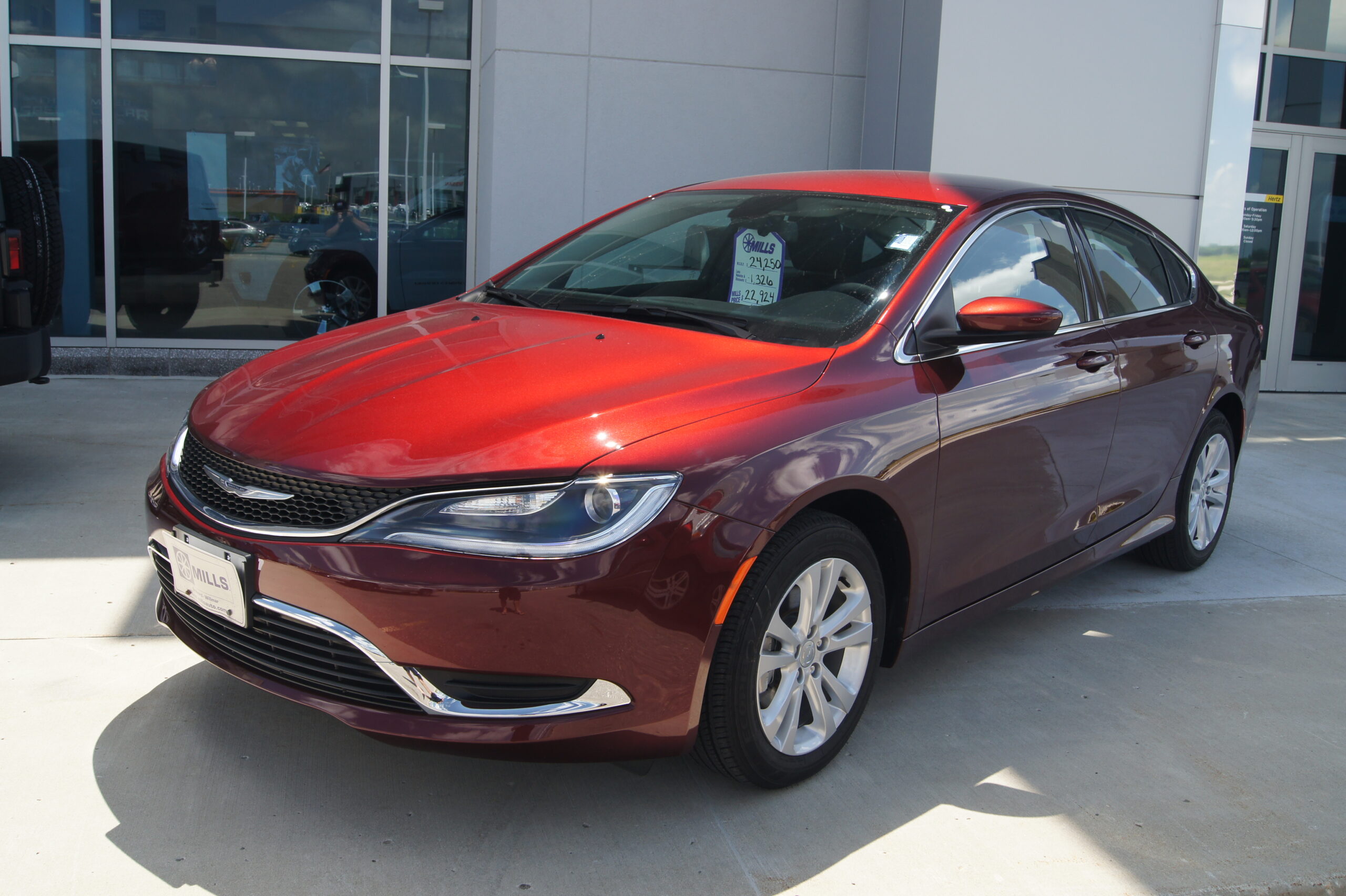
3. **Chrysler 200**The Chrysler 200, produced from 2011 to 2017, was positioned as a stylish and affordable midsize sedan, but it quickly became a byword for reliability struggles among its owners. The vehicle, particularly the models from 2015, 2016, and 2017, developed a reputation for a host of mechanical and quality issues that profoundly impacted owner satisfaction, leading many to wish they had chosen a different vehicle.
One of the most frequently cited problems revolved around its transmission, specifically the ‘9-speed automatic tranny [which was] to be especially problematic.’ This critical component was not just a minor inconvenience; ‘transmission failure was a thing, too,’ indicating widespread and often catastrophic issues. Owners experienced a ‘less-responsive transmission that can lead to unforeseen stalling and hesitation,’ making for an unpredictable and often unsafe driving experience that was far from smooth or reassuring.
Beyond the transmission woes, the Chrysler 200 also ‘suffers from engine performance problems,’ further compounding its mechanical shortcomings. These engine issues meant that drivers often found themselves with ‘sluggish acceleration and the need for frequent gear shifts, especially in hilly areas,’ detracting significantly from the expected comfort and ease of driving a midsize sedan. This double whammy of engine and transmission troubles meant the core powertrain was a constant source of concern.
Moreover, the disappointment extended to the vehicle’s interior. While the ‘design of the Chrysler 200 appears luxurious at first glance,’ owners quickly discovered that ‘the materials quickly began to show wear.’ This meant that the initial perception of quality faded rapidly, replaced by ‘complaints about uncomfortable seating and subpar finish’ that became commonplace. Such issues undermined the overall ownership experience, turning a supposedly upscale interior into a point of daily irritation.
In sum, the Chrysler 200 failed to bridge the gap between its outward appearance and its underlying quality. The ‘disparity between expectations and reality led many owners to shun the make and model in the future.’ Its numerous reliability issues, particularly with the transmission and engine, combined with disappointing interior quality, cemented its place as a vehicle that frequently left owners with significant buyer’s remorse, questioning their investment in a car that struggled to perform reliably or comfortably.
Car Model Information: 2017 Chrysler 200 LX
Name: Chrysler 200
Manufacturer: Chrysler
Production: 2010–2016
ModelYears: 2011–2017
Assembly: Sterling Heights, Michigan
Class: Mid-size car
Sp: us
Predecessor: Chrysler Sebring
Categories: 2010s cars, All articles with dead external links, All articles with unsourced statements, Articles with dead external links from July 2020, Articles with permanently dead external links
Summary: The Chrysler 200 is a mid-size sedan that was manufactured and marketed by Chrysler from model years 2011 to 2017 across two generations in four-door sedan and two-door convertible (first generation only) body styles.
The 200 nameplate debuted on the 200C, a prototype hybrid vehicle shown at the 2009 North American International Auto Show in Detroit and based on the Chrysler 300. The 200C concept was engineered to accept either traditional gasoline, hybrid or full-electric powertrains.
Get more information about: Chrysler 200
Buying a high-performing used car >>>
Brand: Chrysler Model: 200
Price: $11,988 Mileage: 91,194 mi.
Read more about: Bawse-Level Bling: The 10 Most Shocking Custom Paint Jobs in Rick Ross’s Legendary Car Collection

4. **Nissan Altima**Another prominent example of a car that frequently leaves its owners wishing for a do-over is the Nissan Altima. This midsize sedan, while generally popular for its practicality and fuel efficiency in certain iterations, has specific model years and recurring issues that have severely damaged its reputation for reliability and driver satisfaction. The problems have been significant enough to make many owners swear off the model entirely.
Like its Sentra sibling, a major point of contention for Altima owners has been its continuously variable transmission (CVT). This problematic transmission has been the source of ‘the worst issues raising their ugly heads in the 2013 to 2019 model years.’ Owners experienced a range of frustrating symptoms directly attributable to the CVT, which manifested as inconsistent performance and long-term durability concerns. This specific period marked a low point for the Altima’s mechanical integrity.
Beyond the well-documented CVT challenges, the Nissan Altima was also plagued by other significant mechanical shortcomings. Reports of ‘steering’ issues, ‘excessive oil consumption,’ and ‘oil leaks’ were common complaints. These problems indicated deeper engineering and manufacturing flaws that went beyond a single component, suggesting a broader reliability crisis within these model years. The combination of these faults created a vehicle that was expensive to maintain and unreliable in operation.
Furthermore, the driving experience itself often fell short of expectations for owners. The context notes that ‘the Altima’s braking performance has consistently underperformed in testing, requiring longer stopping distances than most competitors.’ This safety concern alone is enough to deter many buyers. Additionally, the ‘infotainment system feels dated and unresponsive compared to rivals,’ and the problematic CVT created ‘a droning noise during acceleration that many drivers find irritating.’ These ‘quality-of-life issues make ownership less satisfying,’ transforming what should be an enjoyable driving experience into a source of constant annoyance.
Therefore, while the Nissan Altima might appear to be a sensible choice, the accumulated issues, particularly from the 2013-2019 model years, paint a clear picture of a car that frequently leads to buyer’s remorse. The chronic CVT problems, combined with steering issues, oil consumption, poor braking, and a subpar infotainment experience, have collectively ensured that the Altima is ‘another car that owners wish they had never purchased,’ underscoring the importance of thorough research before committing to such a significant investment.
Car Model Information: 2023 Nissan Altima 2.5 SV
Name: Nissan Altima
Caption: 2024 Nissan Altima SR (L34; US)
Manufacturer: Nissan
Aka: Nissan Bluebird
Production: 1992–present
Class: Compact car
Predecessor: Nissan Bluebird,Nissan Stanza
ModelYears: 1993–present
Categories: 2000s cars, 2010s cars, 2020s cars, All-wheel-drive vehicles, All Wikipedia articles written in American English
Summary: The Nissan Altima is a mid-size car manufactured by Nissan since 1992. It is a continuation of the Nissan Bluebird line, which began in 1955.
The Altima has historically been larger, more powerful, and more luxurious than the Nissan Sentra but less so than the Nissan Maxima. The first through fourth-generation cars were manufactured exclusively in the United States and officially sold in North and South America, along with the Middle East and Australia. For other markets, Nissan sold a related mid-size sedan called the Nissan Teana which was between the Altima and Maxima in terms of size. In 2013, the Teana became a rebadged version of the fifth-generation Altima.
The name “Altima” was originally applied to a top trim line of the Nissan Leopard for the Japanese market in 1986, and then to the Nissan Laurel Altima mid-size car sold in Central America and the Caribbean before 1992. In 1992, Nissan discontinued the Stanza which was a Nissan Bluebird clone, replacing it with the US-built Altima, while remaining a compact car. The first Altima was produced in June 1992, as a 1993 model. All Altima models for the North American market were built in Smyrna, Tennessee, until June 2004, when Nissan’s Canton, Mississippi plant also began producing the model to meet high demand.
Get more information about: Nissan Altima
Buying a high-performing used car >>>
Brand: Nissan Model: Altima
Price: $19,790 Mileage: 64,614 mi.
Read more about: Buyer Beware: These 10 Popular Cars Are Known Money Pits After 100,000 Miles, According to Automotive Experts
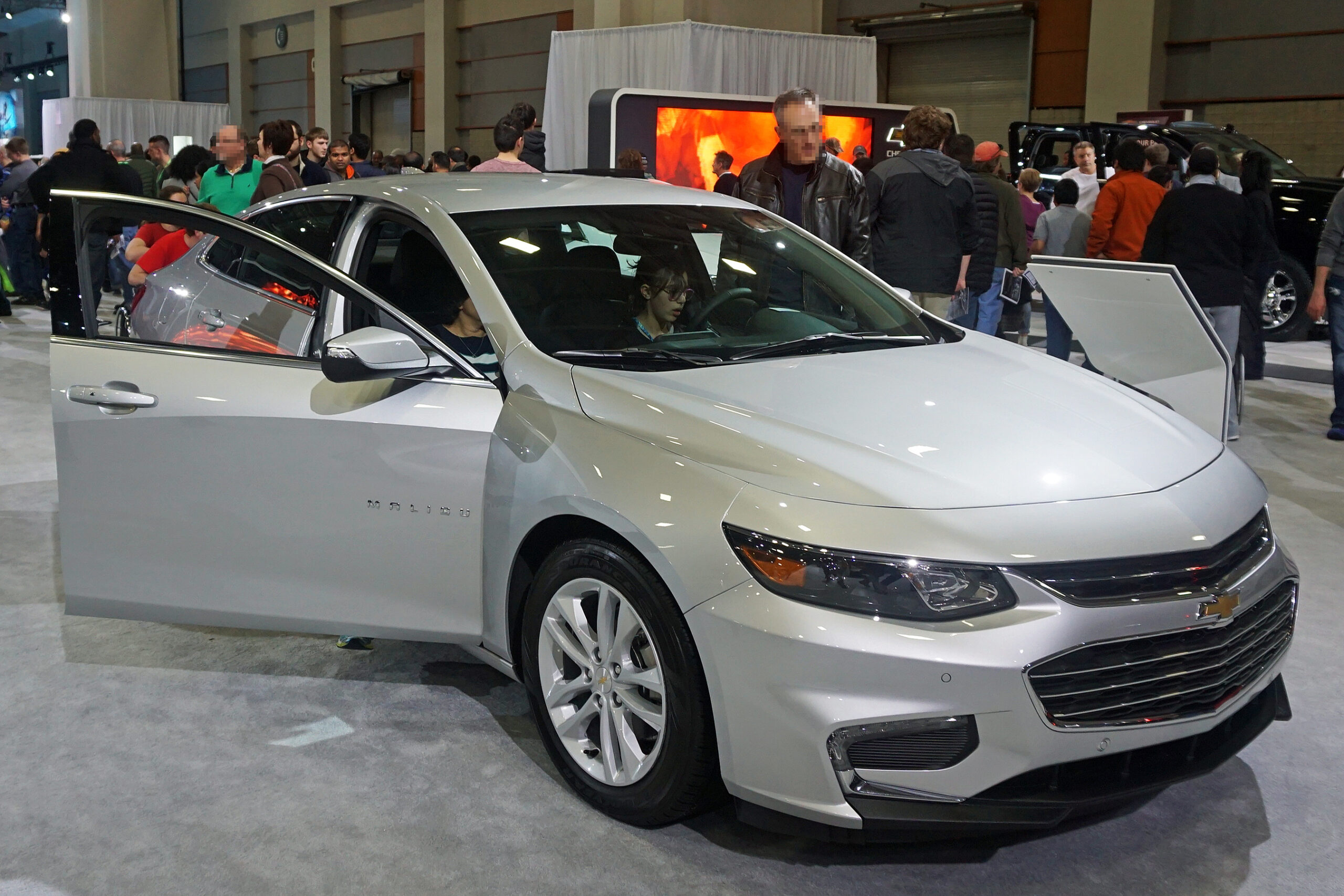
5. **Chevrolet Malibu**Transitioning from the initial entries, our next vehicle on the list of regrettable purchases is the Chevrolet Malibu, a midsize sedan that has often appealed to buyers looking for a practical and seemingly dependable family car. Despite its widespread popularity and accessible positioning in the market, a considerable number of owners have voiced significant issues that would emphatically deter them from ever considering this vehicle again. The root of their profound dissatisfaction often lies in the vehicle’s fundamental reliability, leading to a cascade of expensive and thoroughly inconvenient problems that undermine the entire ownership experience.
One of the most frequently cited and critical grievances concerning the Malibu involves its core powertrain components: the engine and transmission. Several specific model years have become notorious for serious engine problems, including what many owners describe as persistent and excessive oil consumption. This issue isn’t merely an inconvenience; it often serves as a precursor to more severe and costly internal engine damage. Compounding this, reports of transmission failures have been alarmingly common across various model years, transforming what should be a dependable daily driver into a constant source of anxiety and frequent, unwelcome visits to the mechanic. These critical mechanical failings not only eroded trust in the vehicle’s basic functionality but also imposed substantial, unplanned financial burdens on owners.
Beyond the vital powertrain, the interior quality of the Chevrolet Malibu also frequently falls significantly short of modern expectations for a midsize sedan. Many owners have consistently reported that the cabin materials not only feel noticeably cheap but are also surprisingly prone to premature wear and tear, often much earlier than anticipated. Scratches seem to appear with disheartening ease, upholstery fades rapidly, and irritating rattling noises become commonplace during everyday driving. These pervasive issues significantly detract from the overall driving enjoyment and the perceived value of the vehicle, transforming the interior from a place of comfort into a daily reminder of compromised quality.
Furthermore, the financial impact of owning a Malibu extends well beyond its purchase price, notably affecting its resale value. Compared to its direct competitors in the fiercely contested midsize sedan segment, the Malibu generally struggles considerably to retain its worth, experiencing a consistently poor resale value. Owners have frequently expressed deep regret at not receiving a fair or competitive return when the inevitable time came to sell or trade in their vehicle. This significant depreciation factor, coupled with the ongoing costs of repairs for its numerous mechanical issues, powerfully reinforces the sentiment of a poor long-term investment, making many current owners understandably hesitant to consider another Chevrolet model in the future.
In essence, the Chevrolet Malibu, while initially presenting itself as an appealing and accessible midsize option, has repeatedly failed to meet fundamental owner expectations regarding reliability, material quality, and long-term financial viability. The continuous cycle of mechanical issues, combined with a rapidly deteriorating interior and disappointing resale value, culminates in a strong and widespread sense of buyer’s remorse for a significant portion of its drivers, thus firmly cementing its place on our comprehensive list of cars owners wish they had never driven off the lot.
Car Model Information: 2020 Chevrolet Malibu FWD RS
Name: Chevrolet Malibu
Manufacturer: Chevrolet
ModelYears: 1964–1983,1997–2025
Class: Mid-size car
Layout: Front-engine, rear-wheel-drive layout
Predecessor: Chevrolet Chevelle
Successor: Chevrolet Celebrity
Caption: Ninth generation Chevrolet Malibu
Categories: 1970s cars, 1980s cars, 1990s cars, 2000s cars, 2010s cars
Summary: The Chevrolet Malibu is a mid-size car that was manufactured and marketed by Chevrolet from 1964 to 1983 and from 1997 to 2025. The Malibu began as a trim-level of the Chevrolet Chevelle, becoming its own model line in 1978. Originally a rear-wheel-drive intermediate, GM revived the Malibu nameplate as a front-wheel-drive car in 1997.
Named after the coastal community of Malibu, California, the Malibu has been marketed primarily in North America, with the eighth generation introduced globally. Malibu production in the US ended in November 2024, as the Fairfax plant is being retooled for the upcoming second-generation Chevrolet Bolt. The Malibu is now the last sedan to have been sold by Chevrolet in the US.
Get more information about: Chevrolet Malibu
Buying a high-performing used car >>>
Brand: Chevrolet Model: Malibu
Price: $17,998 Mileage: 57,610 mi.
Read more about: Rev Up Your Engines: 12 Million-Dollar American Muscle Cars Celebrities Are Obsessed With
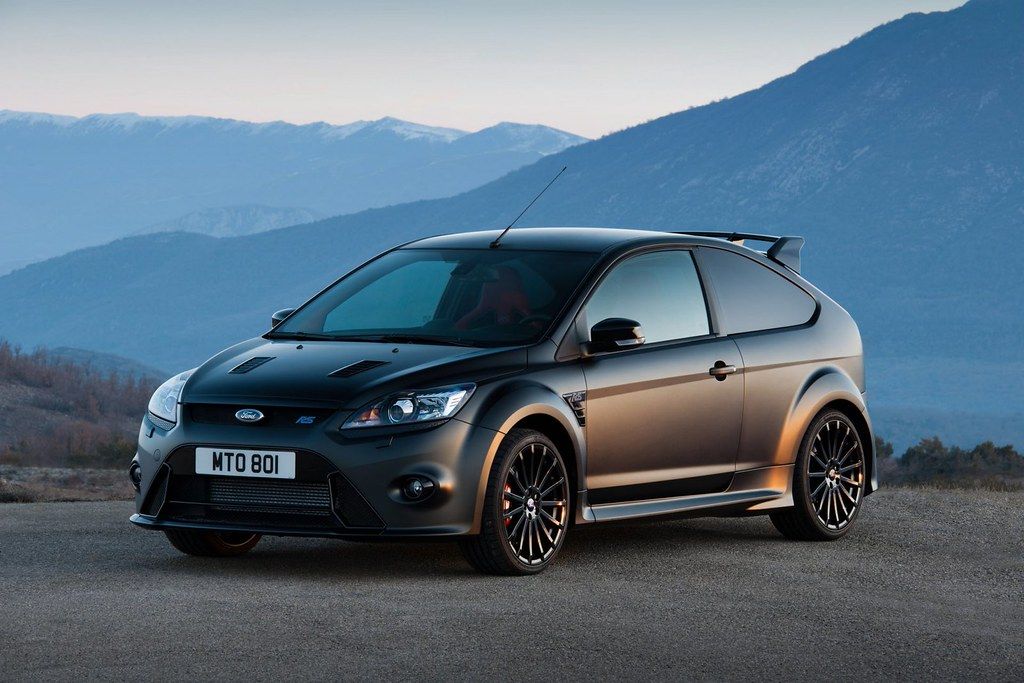
6. **Ford Focus**Next up on our critical exposé of vehicles that consistently spark buyer’s remorse is the Ford Focus, a compact car that has historically drawn in countless customers with its approachable size and an initially appealing price point. However, beneath this surface-level attraction, a substantial number of previous owners have emerged with profoundly strong reservations, explicitly stating their firm reluctance to ever acquire another Focus, primarily due to a series of persistent, frustrating, and often costly issues that plagued their ownership experience.
The most infamous and widespread concern, particularly for the 2012-2016 model years, unequivocally centers on its notoriously problematic dual-clutch automatic transmission. This specific transmission unit has become virtually synonymous with a litany of operational flaws, including distressingly rough shifting, alarming instances of unexpected stalling, and, in numerous unfortunate cases, complete and catastrophic transmission failure. Such critical and unpredictable problems did not merely inconvenience daily commutes; they frequently led to incredibly expensive and recurring repairs, leaving owners feeling deeply frustrated, financially drained, and utterly regretful of their initial purchase decision to buy into the Focus’s promise.
Moreover, while the Ford Focus is, by its very definition, intended to be a compact vehicle, many owners have consistently voiced significant disappointment regarding its interior spaciousness. Passengers, particularly those in the rear, frequently report feeling uncomfortably constrained and cramped, while the trunk capacity often proves to be considerably less than ideal for accommodating even moderately sized personal items, let alone larger grocery hauls or luggage. This palpable lack of practical room undeniably hinders the car’s overall utility, effectively transforming what should be a convenient and versatile city car into a challenging and often frustrating proposition for individuals or small families with even minimal storage or passenger needs.
Adding to the list of notable design shortcomings and practical frustrations, many drivers have also specifically called out the consistently poor visibility offered in newer Focus models. This significant issue is predominantly attributed to the vehicle’s overly thick pillars and comparatively small window openings, which collectively create substantial and dangerous blind spots that severely compromise driver confidence and overall safety. This particular design flaw not only contributes to an overarching sense of discomfort and unease during driving but also raises legitimate and serious safety concerns, further solidifying the Focus’s position as a car many owners wish they had simply avoided altogether.
Considering the cumulative and negative impact of these deeply ingrained issues—ranging from the notoriously unreliable transmission to the practical limitations of interior space and compromised visibility—it becomes unequivocally clear why so many former owners ultimately and strongly advise against the Ford Focus. It stands as a stark and unfortunate example of how an initially affordable entry price can very effectively mask profound design, engineering, and reliability flaws, ultimately resulting in an ownership experience defined far more by frustration and persistent regret than by any sense of enduring satisfaction or value.
Car Model Information: 2014 Ford Focus SE
Name: Ford Focus
Caption: 2018 Ford Focus ST-Line X
Manufacturer: Ford Motor Company
Production: 1998–2025
Class: Small family car
BodyStyle: hatchback
Layout: Front-engine, front-wheel drive,Front-engine, four-wheel-drive
Predecessor: Ford Escort (Europe)
ModelYears: 2000–2018 (North America)
Categories: 2000s cars, 2010s cars, 2020s cars, All articles with specifically marked weasel-worded phrases, All articles with unsourced statements
Summary: The Ford Focus is a compact car (C-segment in Europe) manufactured by the Ford Motor Company from 1998 until 2025. It was created under Alexander Trotman’s Ford 2000 plan, which aimed to globalize model development and sell one compact vehicle worldwide. The original Focus was primarily designed by Ford of Europe’s German and British teams. Production of the fourth generation Focus began in 2018 in Germany and China. In 2025, Ford announced that the Focus will no longer be built, in line with an announcement made in 2022.
Get more information about: Ford Focus
Buying a high-performing used car >>>
Brand: Ford Model: Focus
Price: $9,495 Mileage: 91,204 mi.
Read more about: Navigating the Hype: Uncovering the World’s Most Overrated Tourist Destinations and Their Hidden Gem Alternatives for the Savvy Explorer
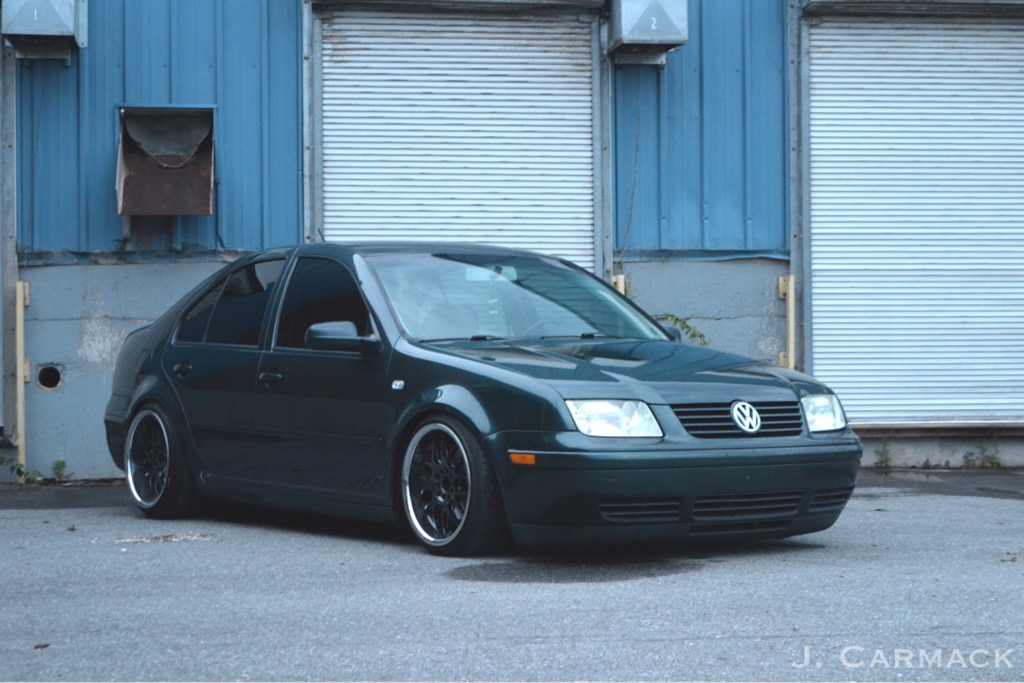
7. **Volkswagen Jetta**Our continued journey through the automotive landscape of regret brings us squarely to the Volkswagen Jetta, a compact sedan that has historically captivated a segment of buyers with its distinctive sophisticated European styling and an interior that often feels a noticeable step above its more conventional class rivals. Despite these initially attractive charms and its reputation for a refined aesthetic, a significant and growing number of Jetta owners have, over time, discovered compelling and frustrating reasons never to return to this particular model, citing a challenging blend of reliability concerns and noticeable comfort drawbacks that diminish the overall ownership appeal.
Recent iterations and specific model years of the Jetta have, unfortunately, been notably plagued by various persistent reliability issues, particularly impacting its intricate electrical systems and its fundamental engine performance. Owners have frequently reported experiencing a gamut of frustrating glitches, ranging from infotainment system malfunctions to sporadic engine misfires, problems that often demand expensive diagnostic work and subsequent, unforeseen repairs. These pervasive problems, which range from minor daily inconveniences to more serious operational concerns, consistently chip away at the vehicle’s perceived quality and regrettably introduce an unwelcome element of unpredictability into what should be a straightforward ownership experience, eroding driver confidence.
Furthermore, an aspect that has increasingly drawn criticism from several Jetta owners is the vehicle’s ride quality and overall passenger comfort, especially when considering its outwardly sporty appearance. Many have pointed out that the suspension tuning can feel excessively firm, translating directly into a notably uncomfortable and jarring experience, particularly when navigating roads that are less than perfectly smooth or are unfortunately riddled with potholes. This inherent stiffness significantly detracts from the expected refinement and smooth ride of a European-styled sedan, leading to daily commutes becoming more of a tiresome chore than an enjoyable journey, failing to deliver on the promise of a premium feel.
Another highly significant contributing factor to widespread buyer’s remorse among Jetta owners is the consistently disappointing performance of the vehicle’s resale value. In line with a broader and somewhat concerning trend observed across many Volkswagen models, the Jetta often disappoints considerably when it comes time for owners to sell or trade in their vehicle. The growing public perception of declining brand reliability, coupled with typical market depreciation trends, means that owners frequently report not receiving a fair or competitive price for their initial investment, further souring their overall ownership experience and making them justifiably hesitant to consider the brand again for future vehicle purchases.
Ultimately, while the Volkswagen Jetta initially presents a visually compelling package of accessible style and a seemingly refined interior, its persistent and often costly reliability issues, coupled with a less-than-comfortable ride quality and persistently disappointing resale value, have left many owners with a distinct and lingering feeling of regret. It serves as a potent and valuable reminder that aesthetic appeal and initial perceptions alone cannot adequately compensate for fundamental shortcomings in long-term dependability, comfort, and ultimately, overall ownership satisfaction and financial prudence.
Car Model Information: 2019 Volkswagen Jetta 1.4T S
Name: Volkswagen Jetta
Production: 1979–present
Class: Compact car
Sp: uk
Categories: 1980s cars, 1990s cars, 2000s cars, 2010s cars, All-wheel-drive vehicles
Summary: The Volkswagen Jetta () is a compact car/small family car manufactured and marketed by Volkswagen since 1979. Positioned to fill a sedan niche slightly above the firm’s Golf hatchback, it has been marketed over seven generations, variously as the Atlantic, Vento, Bora, City Jetta, Jetta City, GLI, Jetta, Clasico, and Sagitar (in China).
The Jetta has been offered in two- and four-door saloon / sedan and sometimes as five-door wagon / estate versions. Since the original version in 1980, the car has grown in size and power with each generation. By mid-2011, almost 10 million Jettas have been produced and sold all over the world. As of April 2014, Volkswagen marketed over 14 million, becoming its top selling model.
Get more information about: Volkswagen Jetta
Buying a high-performing used car >>>
Brand: Volkswagen Model: Jetta
Price: $15,592 Mileage: 40,748 mi.
Read more about: Buyer Beware: These 12 Crossovers Turn into Money Pits Past 80,000 Miles
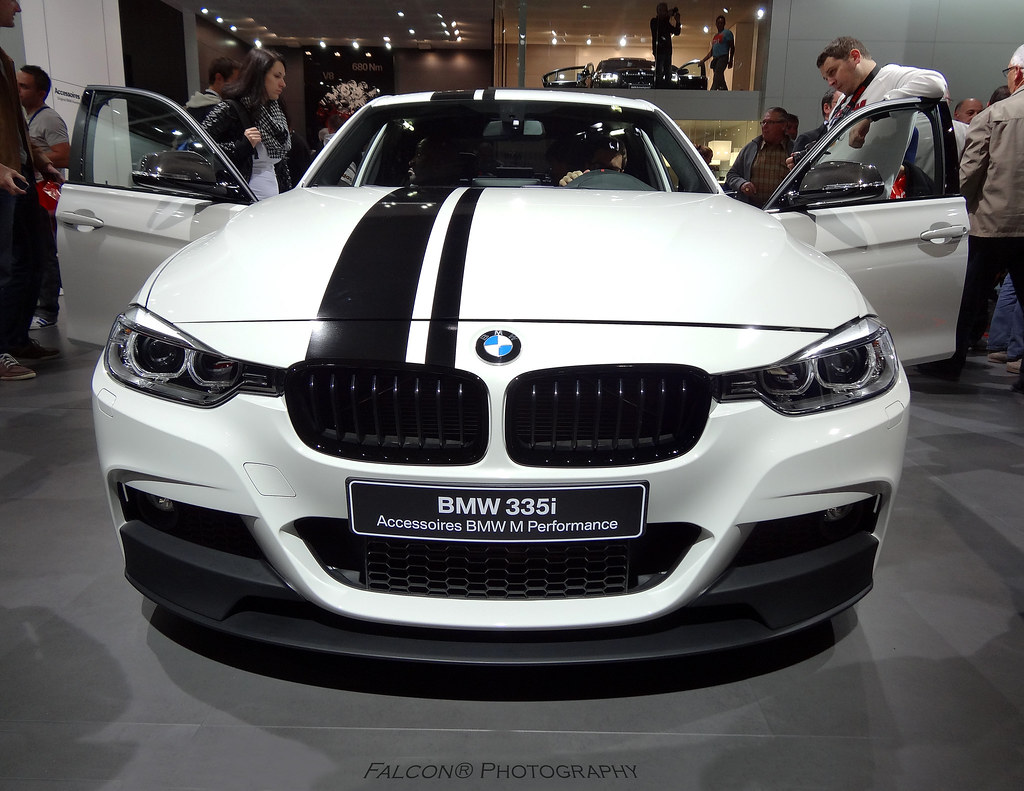
8. **BMW 3 Series**Rounding out our comprehensive list of sedans that often leave owners wishing for a completely different choice is the iconic BMW 3 Series. For several decades, this vehicle has stood as the undisputed benchmark for compact luxury sedans, universally celebrated for its exhilarating performance, precise handling, and an undeniable status symbol that comes with the prestigious BMW badge. It consistently draws drivers who intensely prioritize a dynamic and engaging driving experience alongside the allure of premium German engineering. However, a significant segment of these aspirational owners has learned, often through unexpectedly costly and frustrating experiences, that the highly coveted choice can sometimes come with substantial and unforeseen downsides that diminish the luster of its legendary reputation.
One of the most frequently cited and impactful reasons for significant buyer’s remorse among 3 Series owners is the notoriously high and often unpredictable maintenance costs associated with keeping the vehicle in optimal condition. While the driving experience undoubtedly lives up to its legendary reputation for precision and sportiness, the requirement for premium, specialized parts and highly expert service to maintain a BMW in top operational form can very quickly accumulate into a substantial and often surprising financial burden. What begins as a dream purchase, driven by aspiration, can for many owners, unfortunately transform into a persistent economic strain, making the true long-term cost of ownership considerably greater than initially estimated or budgeted for.
Compounding these financial considerations, many owners have also consistently observed the unwelcome emergence of complex electrical problems as their 3 Series models accrue mileage and age. Complaints are widespread and varied, encompassing critical issues such as the infotainment system freezing unexpectedly and rendering it inoperable, various advanced sensors failing without prior warning, and a host of other perplexing electrical glitches that can turn a previously luxurious and seamlessly integrated experience into one fraught with persistent frustration. These electronic maladies not only disrupt the sophisticated user interface and the vehicle’s convenience features but also significantly undermine the overall premium feel and reliability that buyers expect from such a distinguished brand.
Furthermore, despite its consistently stellar performance ratings and the widely acclaimed driving dynamics, some owners have genuinely found the BMW 3 Series to be less reliably consistent than other highly regarded luxury vehicles within the same competitive price bracket. While its dynamic capabilities and driver engagement are almost unparalleled in its class, the recurring and often expensive reliability issues, particularly as the vehicle moves into later years of ownership, can significantly diminish the overall value proposition and peace of mind. These consistent and frustrating problems ultimately lead many discerning buyers to question their long-standing loyalty to the BMW brand, prompting them to seriously reconsider their options when it’s time for their next luxury vehicle purchase.
The BMW 3 Series, while undeniably delivering an exceptionally thrilling and luxurious driving experience, demands a significant long-term commitment in terms of ongoing maintenance and a willingness to tolerate potential and often expensive reliability challenges, especially those related to its intricate electrical systems. The coveted prestige and dynamic performance, unfortunately, come at a financial price that extends well beyond the initial sticker, leading many former owners to deeply lament their purchasing decision and ultimately seek alternative luxury options that promise a more balanced, predictable, and less financially demanding ownership experience over the long haul. It stands as a powerful reminder that even the most coveted and high-performing luxury vehicles can, over time, become profound sources of significant regret for those who hadn’t fully accounted for their substantial ongoing demands.
Choosing a vehicle is one of the most substantial financial and emotional investments many of us make. While the allure of a shiny new car or an attractive used model can be powerful, the experiences detailed in this comprehensive review serve as crucial cautionary tales. The sedans we’ve explored, from their transmission woes and engine failures to subpar interiors and unexpected maintenance burdens, collectively underscore a critical truth: not all cars live up to their initial promises, and some are destined to become sources of profound buyer’s remorse.
Car Model Information: 2020 Lexus RX 350 Base
Name: BMW 3 Series
Manufacturer: BMW
Production: 1975–present
Class: Compact executive car
Predecessor: BMW 02 Series
Categories: 1970s cars, 1980s cars, 1990s cars, 2000s cars, 2010s cars
Summary: The BMW 3 series is a line of compact executive cars manufactured by the German automaker BMW since May 1975. It is the successor to the 02 series and has been produced in seven generations.
The first generation of the 3 Series was only available as a 2-door saloon; the model range expanded to include a 4-door saloon, 2-door convertible, 2-door coupé, 5-door estate, 5-door liftback (“Gran Turismo”; discontinued in 2019) and 3-door hatchback body styles. Since 2013, the coupé and convertible models have been marketed as the 4 Series; these styles no longer being included in the 3 Series.
The 3 Series is BMW’s best-selling model line, accounting for around 30% of the BMW brand’s annual total car sales, and has won numerous awards throughout its history. The M version of the 3 series, M3, debuted with the E30 M3 in 1986.
Get more information about: BMW 3 Series
Buying a high-performing used car >>>
Brand: BMW Model: 3 Series
Price: $30,981 Mileage: 81,179 mi.
Read more about: Luxury Dream or Maintenance Nightmare? These High-End Cars Will Bleed Your Wallet Dry After Their First Major Service
To navigate the complex automotive landscape successfully, prospective buyers must arm themselves with thorough research, extending beyond glossy brochures and initial test drives. Engaging with owner reviews, scrutinizing reliability reports, and understanding the long-term costs associated with specific models are indispensable steps. Learning from the regrettable journeys of others is perhaps the most valuable lesson one can heed, ensuring that your next vehicle purchase is a source of enduring satisfaction, not just another shame on the driveway.

